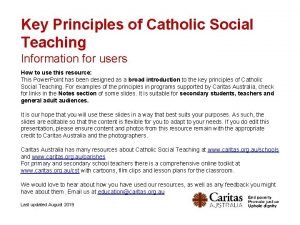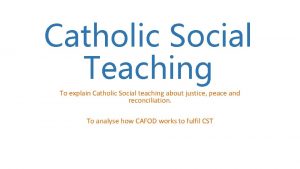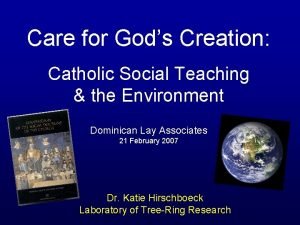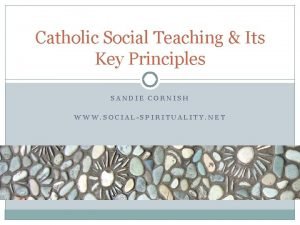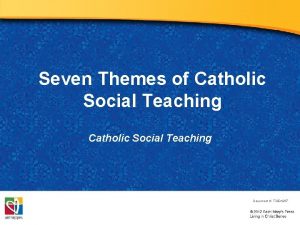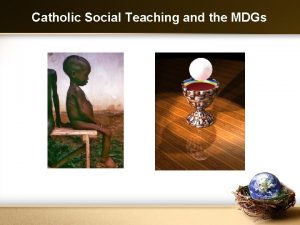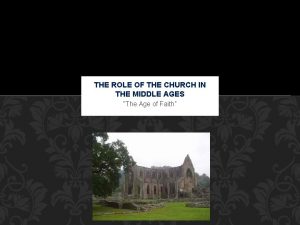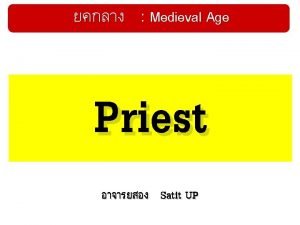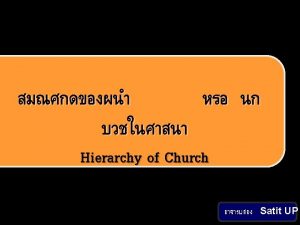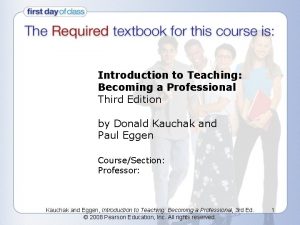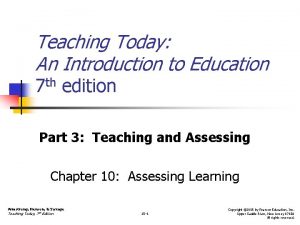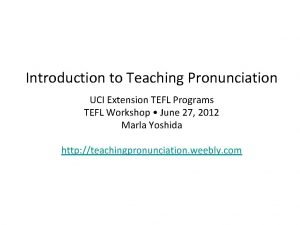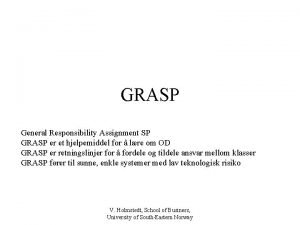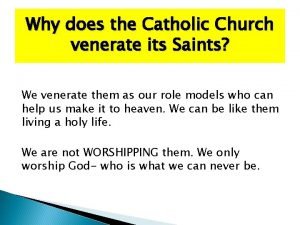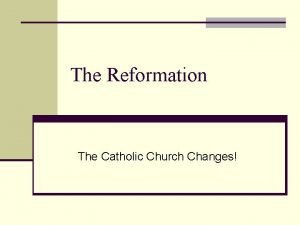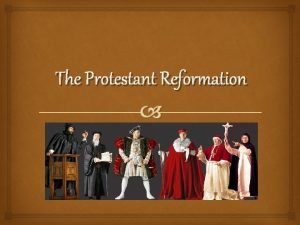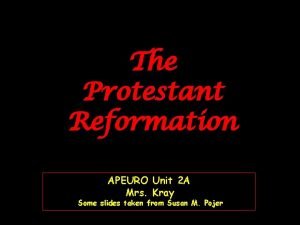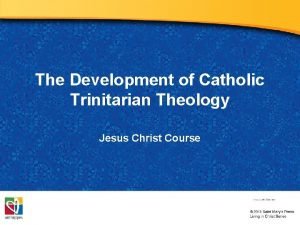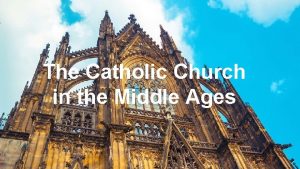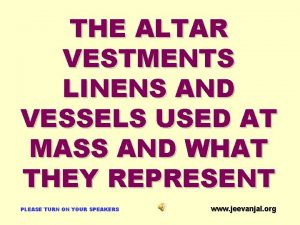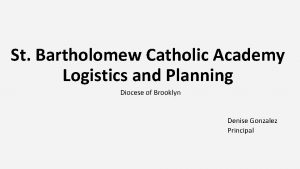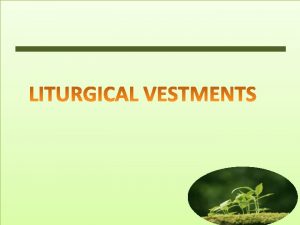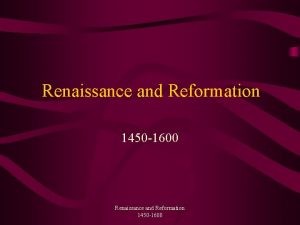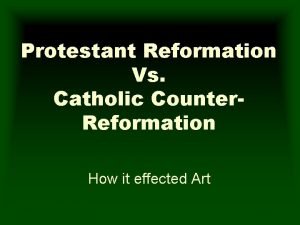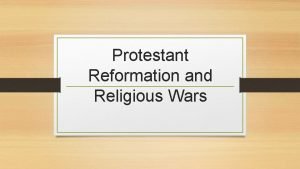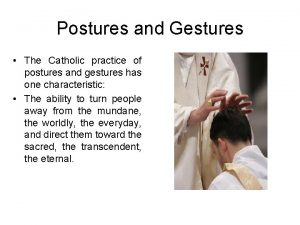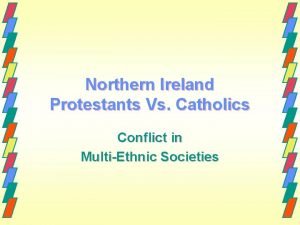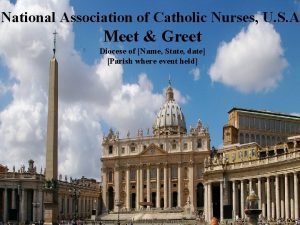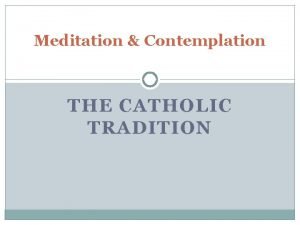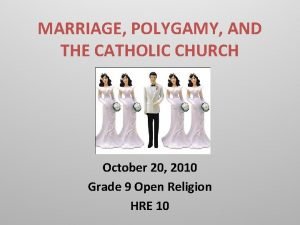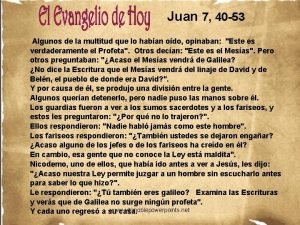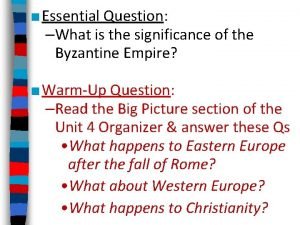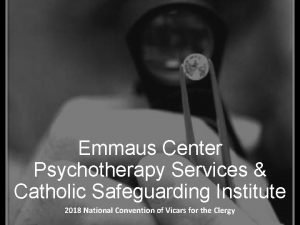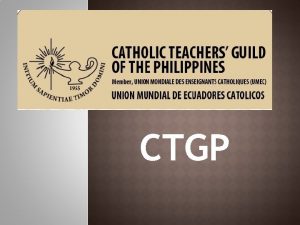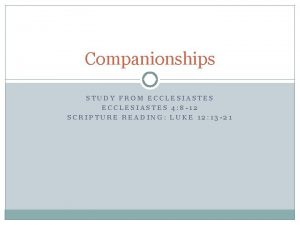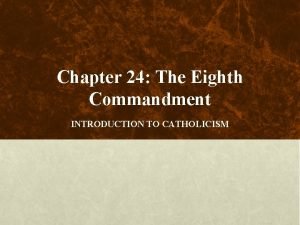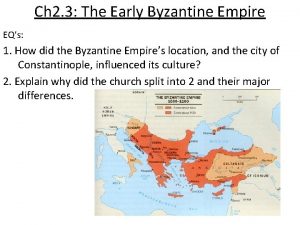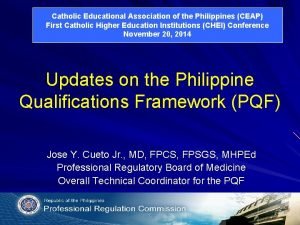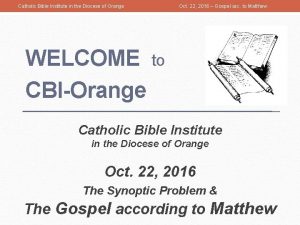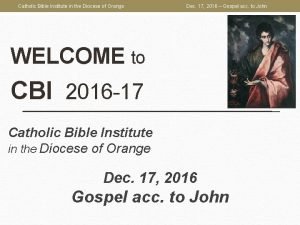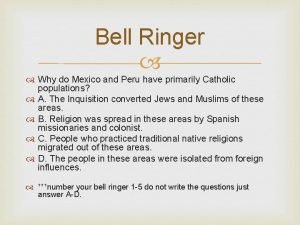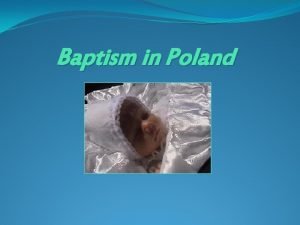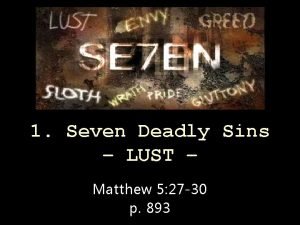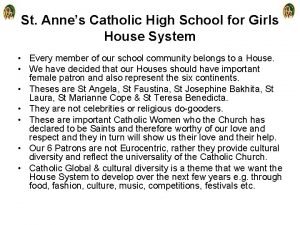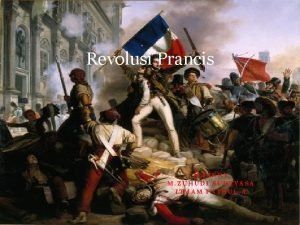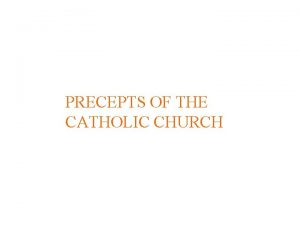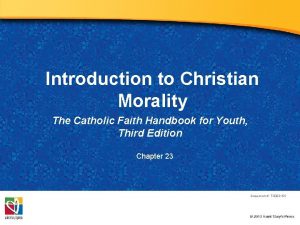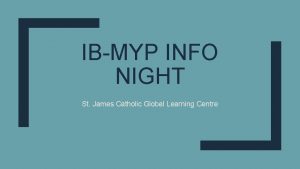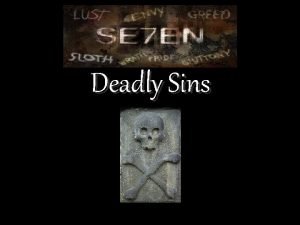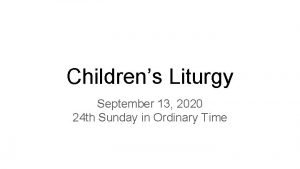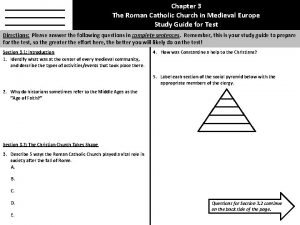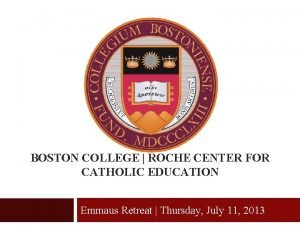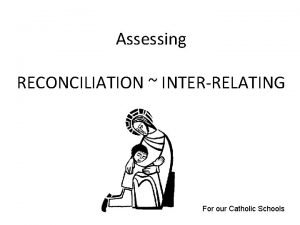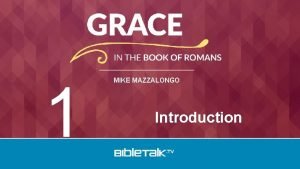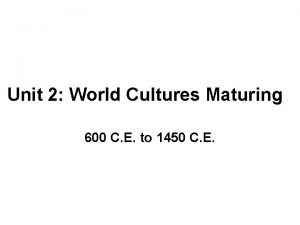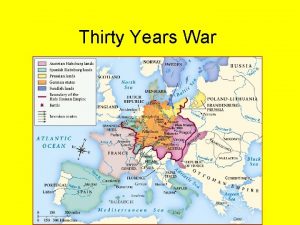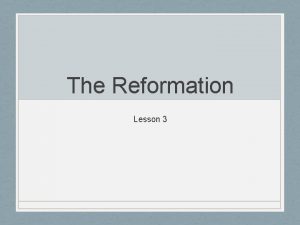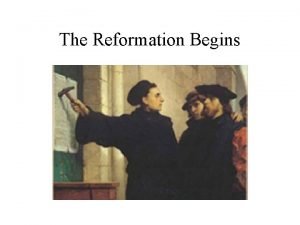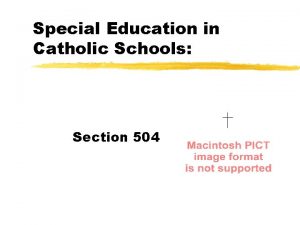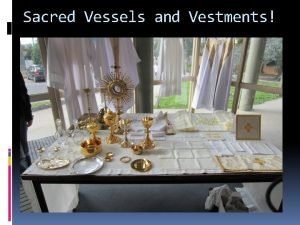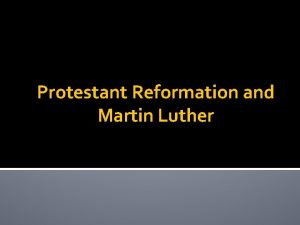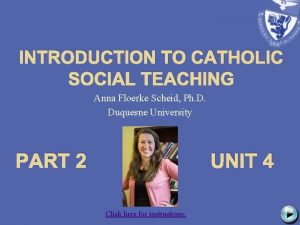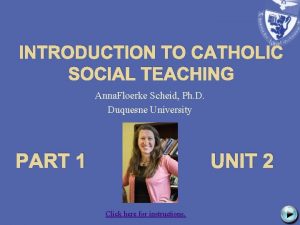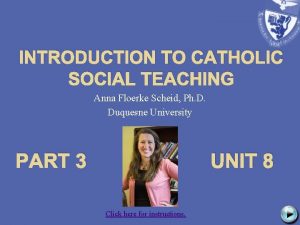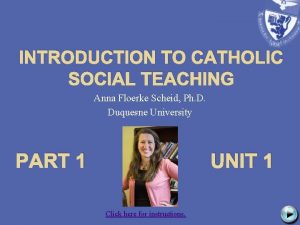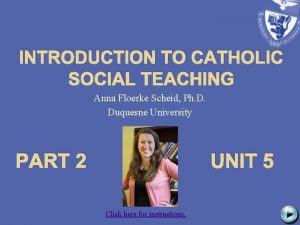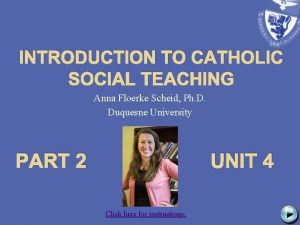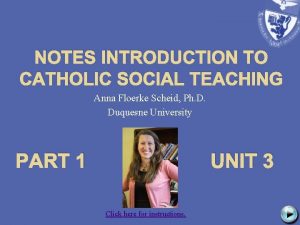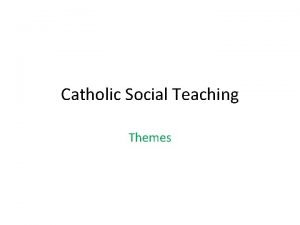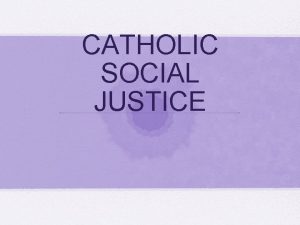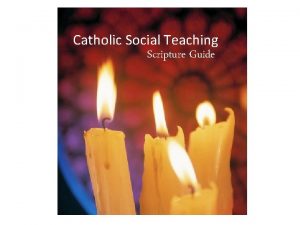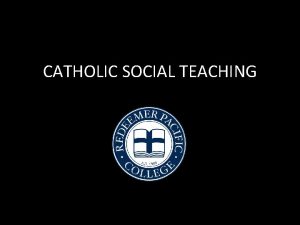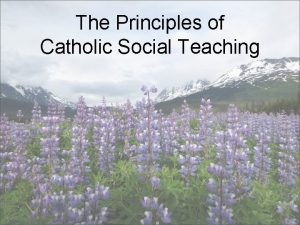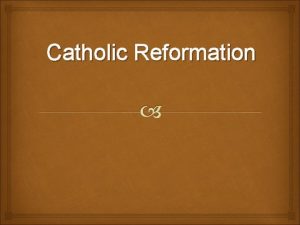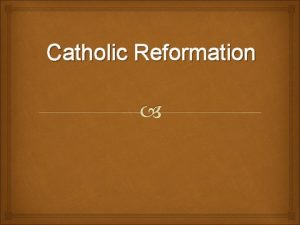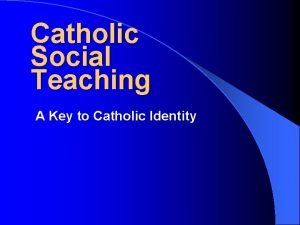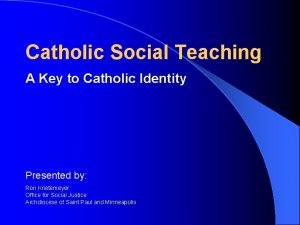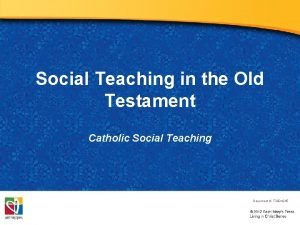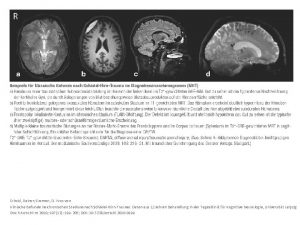INTRODUCTION TO CATHOLIC SOCIAL TEACHING Anna Floerke Scheid



































































































- Slides: 99

INTRODUCTION TO CATHOLIC SOCIAL TEACHING Anna Floerke Scheid, Ph. D. Duquesne University PART 3 UNIT 9 Click here for instructions.

Instructions Navigation through the course will occur by clicking on the following action buttons located in the lower right corner of each screen: The HOME button will be placed in the center of each slide and will bring you to the Table of Contents for further navigation. The NEXT and BACK buttons will move you through the course content. The EXIT button will be placed at the end of each Unit and will return you to the course menu.

Instructions � This course is meant to be self-paced, though there will be opportunities to interact with your local and global JPIC groups. � Course content and activities should be completed in the order that they are presented to maximize student success. � The Table of Contents will be your starting point for each Unit

Activity Icons Each type of course activity has a unique icon located in the upper right corner of the screen. In this course you will: Create doc Local discussion Global discussion Reflect Read online Watch video Quiz/test Online journal

PART 3: UNIT 9: CARE OF CREATION

UNIT 9 TABLE OF CONTENTS This unit is divided into several components. Start with About This Unit OR click on the link below to navigate to the component where you left off. Revisit as needed. Instructions About This Unit Aims of the Unit What You Will Learn 9. 1 Reading: Thomas Massaro 9. 2 Reading: Laudato Si’ 9. 3 Notes and Critical Concepts 9. 4 Reflection and Discussion Unit Summary Part III Self-Graded Test

What is this unit about? The care of creation is an increasingly critical theme in CST. While CST has included concerns for ecological justice for decades, this theme has become more significant in recent years due to the threat of global climate change. The most recent papal social encyclical, Laudato Si’, treats this topic with great depth, arguing for a concept of integral ecology that views social and ecological problems as related.

Aims of the Unit By the time you are finished with this unit, you should: Be able to articulate four different models for thinking about ecological ethics Be able to discuss Pope Francis’ vision for addressing ecological crises through the lens of faith Be able to identify obstacles to ecological well-being in your own context and envision ways to address those obstacles

What You Will Learn The content of four models for thinking about ecological ethics The fivefold vision of Pope Francis’ Gospel of Creation

9. 1 READING: THOMAS MASSARO

Reading Click here to complete the reading. Read Thomas Massaro, “The Environment in Catholic Social Thought” in Living Justice: Catholic Social Teaching in Action, (Lanham, MD: Rowman and Littlefield Publishers, Inc. , 2012): 165 -172.

9. 2 READING: LAUDATO SI’

Reading Click here to complete the reading. Read Laudato Si’: Intro: 1 -2, 10 -12, 16 Chapter 1: 17 -23, 48 -52 Chapter 2: 65 -67, 76 -78, 84 -86, 93 -95 Chapter 3: 105 -108, 122 -123 Chapter 4: 138 -142, 156 -159 Chapter 5: 169 -170, 190 -194 Chapter 6: 203 -204, 211, 220 -223, 244 -246

9. 3 NOTES AND CRITICAL CONCEPTS

Ecological Ethics Massaro discusses four models for thinking about ecological ethics: 1) Dominion: Humans have been given power over nature by God, and we are commanded to use nature to our benefit. Emphasis: human beings not at home in nature; differences between humans and the rest of creation Dangers: dualism; contempt for material world

Ecological Ethics 2) Stewardship: Humans should care for creation; creation, in turn, is meant to serve our needs. Emphasis: anthropocentrism; a wide gap between humans and the rest of creation Dangers: lacks a sense of solidarity with other creatures; emphasizes mastery/control; emphasizes instrumental value of other creatures Note: This is the model we often hear about in Catholic catechesis, though it may not be accurate to say that Catholic teaching on ecology fits primarily here.

Ecological Ethics 3) Creation-centered: Humans are part of creation. Emphasis: intrinsic value (not just instrumental) of all creatures; all creation deserves protection; interdependence Dangers: unclear how to balance solidarity of human needs with those of other species

Ecological Ethics 4) Deep Ecology: This is a total re-envisioning of the relationship and boundaries between humans and the rest of creation. Emphasis: asceticism; mysticism; nature as medium for understanding the divine Dangers: making creation into an idol; neglecting human needs Note: This is consistent with the Catholic stance against consumption and the idea that Creation is revelatory of God.

Laudato Si’ Pope Francis presents a fivefold “Gospel of Creation” as a resource for thinking through and addressing ecological crises through the lens of faith: 1) Interconnectedness 2) Creation as the Order of Love 3) The Cultural and Spiritual Causes of the Ecological Crisis 4) Moral Implications 5) Call to Live Simply, Joyfully

Interconnectedness Francis insists on a “broader vision of reality” to see the whole rather than just discrete parts, and to see humanity within the larger whole of which it is a part. Human beings belong, fundamentally and at our core, to the earth and to the world around us. We must see all things as interconnected. The scriptures outline an interconnected world: “Human life is grounded in three fundamental and closely intertwined relationships: with God, with our neighbor and with the earth itself. According to the Bible, these three vital relationships have been broken, both outwardly and within us. This rupture is sin” (66).

Interconnectedness This fundamental, in-built interconnectedness is the basis for Francis’ idea of an “integral ecology. ” “It cannot be emphasized enough how everything is interconnected…Just as the different aspects of the planet – physical, chemical and biological – are interrelated, so too living species are part of a network which we will never fully explore and understand” (138). Integral ecology means that we have to begin seeing environmental and social problems together, not as isolated problems. We need to seek strategies that combat poverty and protect nature (139). We must preserve not just biodiversity and important ecosystems but also important and endangered human cultural traditions, with a special respect for indigenous peoples.

Creation as the Order of Love Describing creation as “the order of love” (77) gives us the broadest possible view of the depth of God’s love. Because of the Creator’s love, and because we are made in God’s likeness and made for love, Francis calls us to love all creatures – to view them as God the Creator might view them. Pope Francis even emphasizes a cosmic eschatology, a sharing of all creatures in eternal life.

Creation as the Order of Love Francis detects elements of the Gospel of Creation in the life, ministry, death, and resurrection of Jesus Christ. Jesus lived in harmony with creation, and he often retreated to natural places to commune with his Father. Jesus calls us to perceive the divine message of the Creator’s love in each thing. Francis affirms a “Cosmic Christology, ” in which the presence of the Word (Logos, or Second Person of the Trinity) permeates all time and space: “One Person of the Trinity entered into the created cosmos, throwing in his lot with it, even to the cross. From the beginning of the world, but particularly through the incarnation, the mystery of Christ is at work in a hidden manner in the natural world as a whole” (99).

The Cultural and Spiritual Causes of the Ecological Crisis The ecological crisis is not only caused by the burning of too many fossil fuels or the production of too much pollution. There are far-reaching powers driving us to do what many, if not most, recognize as unsustainable and dangerous. We must “look for solutions not only in technology but in a change of humanity; otherwise we would be dealing merely with symptoms” (9).

The Cultural and Spiritual Causes of the Ecological Crisis These causes include: Globalization of “the technocratic paradigm”: Technology is not neutral. It creates frameworks that condition lifestyles and shape social possibilities. A powerful elite often directs these technologies for their own interests (107). The technocratic paradigm seeks control and mastery, it identifies the instrumental value of things, but it does not see the greater whole.

The Cultural and Spiritual Causes of the Ecological Crisis “Rapidification, ” or an indictment of our so-called developed and more advanced way of life: “Rapidification” is a term coined by Pope Francis that means a “more intense pace of life and work, ” one which has brought about changes that exceed the earth’s natural systems. In addition, this form of progress brings with itself its own forms of anxiety (18). An unthinking devotion to progress: We must see progress as more than simply acquiring more things; we need to believe that “a decrease in the pace of production and consumption can at times give rise to another form of progress and development” (191).

Moral Implications Pope Francis turns to important principles of CST to guide us in our responses to the ecological crisis: The common good: “The climate is a common good, belonging to all and meant for all” (23). Solidarity: The principle of the common good leads us directly to “solidarity and a preferential option for the poorest of our brothers and sisters” (158). The common good includes solidarity with the poor, with future generations, and in some ways with all of creation. We owe future generations not just a viable earth but a real community of creation. Ecological Debt: There is an “ecological debt” owed by developed nations towards developing nations (52).

Call to Live Simply, Joyfully Pope Francis appeals to St. Francis of Assisi, who invites us all to see nature as “a magnificent book in which God speaks to us and grants us a glimpse of his infinite beauty and goodness” (12). St. Francis “asked that part of the friary garden always be left untouched, so that wild flowers and herbs could grow there, and those who saw them could raise their minds to God, the Creator of such beauty” (12).

Call to Live Simply, Joyfully A dedication to the Creator yields a spirituality of deep affection and bondedness with all creatures. The poverty and simplicity of Saint Francis was a refusal to turn reality into “an object simply to be used and controlled” (11). St. Francis shows us the importance of simplicity and inner peace and that living more simply might be just the solution to the whirlwind of mindless consumerism. The real goal is not just sustainability but joy and peace.

9. 4 REFLECTION AND DISCUSSION

Journal In your course journal, reflect on the following two questions. Post all or a portion of your responses to the discussion board. Respond to others’ reflections. 1) Given what you have read in Laudato Si’, which model of ecological ethics does CST most seem to embrace? Which model(s) seem to be rejected? Explain.

Journal 2) What seem to be the greatest threats to “integral ecology” in your own local contexts? What action can you take to reduce those threats?

Unit Summary Unit 9 introduced you to the CST theme of the care of creation. You learned about four models of ecological ethics and reflected on how those models interact with CST. You studied theological resources presented by Pope Francis for thinking through ecological crises and reflected on how these resources might be brought to bear in your own contexts.

PART III SELF-GRADED TEST

Part III Self-Graded Test Directions: Complete the test on the following slides. Grade yourself honestly and review as needed. To select your answer, click on best possible choice. If your answer is correct, you will see a If your answer is incorrect, you will see a and you should return to the question to try again. Use the to move to the next question or to navigate to the previous after choosing an incorrect answer. The home button will remain on each slide so that you can review material if needed. **Start 20 Question Self-graded test

Multiple Choice Questions

Q 1: Pacem in Terris affirms that all human beings have rights and duties that: A. Can only be respected by Christians. B. Only pertain to the secular or political sphere. C. Flow from our human dignity as creatures made in the image and likeness of God. D. Can be negated or disrespected if we commit grave sins such as murder or torture.

OOPS! The answer you chose is incorrect. Click the button in the corner to try again.

CORRECT!! Let’s go to the next question!

Q 2: Which of the following lists of human rights does Pacem in Terris affirm: A. The right to practice one’s chosen religion, the right to work and to living wages, and the right to participate in one’s government. B. The right to bear arms, the unlimited right to private property, and freedom from taxation. C. The right to reproductive autonomy and the right to die. D. The rights of animals and nonhuman nature.

OOPS! The answer you chose is incorrect. Click the button in the corner to try again.

CORRECT!! Let’s go to the next question!

Q 3: For Pope John XXIII, the purpose of government is: A. To be particularly attentive to the most vulnerable members of society whose rights are most likely to be violated. B. To promote the common good by guaranteeing human rights and enabling citizens to practice their duties. C. To keep severe inequalities in check since these often lead to conflict and the violation of people’s rights. D. All of the above.

OOPS! The answer you chose is incorrect. Click the button in the corner to try again.

CORRECT!! Let’s go to the next question!

Q 4: CST maintains a presumption against the use of force or warfare. This means that: A. We have a moral duty to do our best to avoid violent or coercive solutions to political problems, and to limit or restrain warfare even when it seems necessary to promote peace and justice. B. Warfare and violence are always wrong and should be avoided at all costs. C. Most nation states do not have a moral claim on the right to wage war. D. The use of force can be presumed to be justified in cases of grave evil or injustice.

OOPS! The answer you chose is incorrect. Click the button in the corner to try again.

CORRECT!! Let’s go to the next question!

Q 5: Proportionality in the context of the Just War Theory means that: A. There must be a proportionate reason for going to war: The good to be attained by fighting a war must outweigh the harm done. B. The weapons and strategies used within the war must be proportionate: The good attained through the use of particular weapons and strategies must outweigh the evil of using those weapons and strategies. C. Civilian loss of life must be minimized. D. Both a and b.

OOPS! The answer you chose is incorrect. Click the button in the corner to try again.

CORRECT!! Let’s go to the next question!

Q 6: The term “just war pacifism” refers to: A. The belief that all warfare and violence are always wrong with no exceptions. B. The belief that modern warfare is so destructive that it can never fulfill the strictures of the just war tradition. C. The belief that the just war tradition is a non-Christian political development that cannot be accepted by people of faith. D. The belief that when war is waged justly it can lead to peace.

OOPS! The answer you chose is incorrect. Click the button in the corner to try again.

CORRECT!! Let’s go to the next question!

Q 7: The key difference between the stewardship and creation-centered models of ecological ethics is: A. The danger of dualism in the stewardship model versus that of idolatry in the creation-centered model. B. Their understandings of how the Genesis accounts of creation relate to ecological ethics. C. How they understand the place of human beings in creation. Stewardship views humans as placed at the center of creation. The creation-centered model views human beings as part of a creation that has intrinsic value. D. None of the above.

OOPS! The answer you chose is incorrect. Click the button in the corner to try again.

CORRECT!! Let’s go to the next question!

Q 8: Pope Francis’ notion of integral ecology can be understood as: A. A principle for viewing environmental and social problems as connected to each other and as requiring solutions that recognize this interconnectedness. B. A poetic metaphor that explains the intrinsic value of creation. C. A principle that demonstrates how all social and economic classes are equally affected by ecological degradation. D. A way of understanding creation as the order of God’s love.

OOPS! The answer you chose is incorrect. Click the button in the corner to try again.

CORRECT!! Let’s go to the next question!

Q 9: “Rapidification” is a term coined by Pope Francis to describe: A. The swift movement of deadly contagious diseases such as Ebola and influenza, especially among the vulnerable. B. The importance of technological progress as a means of addressing ecological crises. C. The importance of rapidly mastering the natural world so as to secure the future for human well-being. D. The increased pace of human life that has led to related consequences of ecological degradation and human anxiety.

OOPS! The answer you chose is incorrect. Click the button in the corner to try again.

CORRECT!! Let’s go to the next question!

Q 10: For Pope Francis, his namestake is: A. Best viewed as an advocate for animal rights. B. A model for how to live life in simplicity and joy. C. An example of how to live motivated by “deep ecology. ” D. Primarily helpful insofar as he points the way toward ecologically sustainable lifestyles.

OOPS! The answer you chose is incorrect. Click the button in the corner to try again.

CORRECT!! Let’s go to the next question!

TRUE/FALSE QUESTIONS

Q 11: With its affirmation of human rights, Pacem in Terris represents a shift away from the Syllabus of Errors and its stance of defensiveness against certain Enlightenment ideals. TRUE FALSE

OOPS! The answer you chose is incorrect. Click the button in the corner to try again.

CORRECT!! Let’s go to the next question!

Q 12: In CST, human rights are inextricably connected with duties. TRUE FALSE

OOPS! The answer you chose is incorrect. Click the button in the corner to try again.

CORRECT!! Let’s go to the next question!

Q 13: CST teaches that the dignity of individual states is dependent upon the degree to which they practice democracy and respect human rights. TRUE FALSE

OOPS! The answer you chose is incorrect. Click the button in the corner to try again.

CORRECT!! Let’s go to the next question!

Q 14: The Just War Theory functions as a checklist for when we can go to war. TRUE FALSE

OOPS! The answer you chose is incorrect. Click the button in the corner to try again.

CORRECT!! Let’s go to the next question!

Q 15: The just war criterion of “right intention” means that war can only be fought in order to re-establish peace and order. TRUE FALSE

OOPS! The answer you chose is incorrect. Click the button in the corner to try again.

CORRECT!! Let’s go to the next question!

Q 16: CST views both commitment to the Just War Theory or to pacifism as reasonable options for practicing Catholics who seek to define their positions on warfare and violence. TRUE FALSE

OOPS! The answer you chose is incorrect. Click the button in the corner to try again.

CORRECT!! Let’s go to the next question!

Q 17: The criterion of legitimate authority suggests that ethnic-based militia groups may wage war when they have a just cause. TRUE FALSE

OOPS! The answer you chose is incorrect. Click the button in the corner to try again.

CORRECT!! Let’s go to the next question!

Q 18: For Pope Francis, science is more equipped than theology to address the ecological crisis. TRUE FALSE

OOPS! The answer you chose is incorrect. Click the button in the corner to try again.

CORRECT!! Let’s go to the next question!

Q 19: Pope Francis argues that wealthy nations owe an ecological debt to poorer nations. TRUE FALSE

OOPS! The answer you chose is incorrect. Click the button in the corner to try again.

CORRECT!! Let’s go to the next question!

Q 20: Pope Francis affirms the notion that only human beings have souls and thus only human beings can enjoy eternal life with God. TRUE FALSE

OOPS! The answer you chose is incorrect. Click the button in the corner to try again.

CORRECT!! Go to the next slide!

Congratulations! You have completed the test for Part 3 Unit 9.

YOU HAVE COMPLETED UNIT 9 Please return to the Table of Contents using the HOME button to review any material or EXIT to the course menu.
 Common good
Common good Www.googleimage
Www.googleimage Caritas social teaching
Caritas social teaching Cafod catholic social teaching
Cafod catholic social teaching Catholic social teaching
Catholic social teaching Care for god's creation catholic social teaching
Care for god's creation catholic social teaching 7 themes of catholic social teaching examples
7 themes of catholic social teaching examples Sandie cornish
Sandie cornish Seven key themes of catholic social teaching
Seven key themes of catholic social teaching Catholic teaching on poverty
Catholic teaching on poverty Social structures
Social structures Ranks of the catholic church
Ranks of the catholic church Catholic clergy hierarchy
Catholic clergy hierarchy Differences between micro teaching and traditional teaching
Differences between micro teaching and traditional teaching Apa itu social thinking
Apa itu social thinking Social thinking social influence social relations
Social thinking social influence social relations Introduction of team teaching
Introduction of team teaching Introduction to teaching becoming a professional
Introduction to teaching becoming a professional Esl teacher portfolio
Esl teacher portfolio Teaching today an introduction to education
Teaching today an introduction to education Introduction to teaching profession
Introduction to teaching profession Uci tefl
Uci tefl Teaching personal and social responsibility
Teaching personal and social responsibility Beliefs of roman catholic
Beliefs of roman catholic Catholic hand gesture
Catholic hand gesture St. robert catholic high school ib registration
St. robert catholic high school ib registration Sekeepare
Sekeepare Catholic terminology
Catholic terminology Holy family church davidsonville md
Holy family church davidsonville md Ninth commandment catholic
Ninth commandment catholic You shall not steal is what commandment
You shall not steal is what commandment Lutheran vs catholic
Lutheran vs catholic Protestant vs catholic war
Protestant vs catholic war Church hierarchy protestant
Church hierarchy protestant Catholic vs christian
Catholic vs christian Branches of catholic church
Branches of catholic church Mother teresa catholic secondary school
Mother teresa catholic secondary school The development of catholic trinitarian theology
The development of catholic trinitarian theology Akacatholic
Akacatholic Catholic life
Catholic life Church
Church Altar vessels and vestments
Altar vessels and vestments Catholic church cirencester
Catholic church cirencester St bartholomew catholic academy
St bartholomew catholic academy Roman catholic deacon symbol
Roman catholic deacon symbol What is the difference between protestant and catholic
What is the difference between protestant and catholic Deshaye catholic school
Deshaye catholic school Protestants vs catholics
Protestants vs catholics Catholic v protestant
Catholic v protestant Prince of peace montessori
Prince of peace montessori What knee do you genuflect on
What knee do you genuflect on Protestant vs catholic
Protestant vs catholic Catholic nurses
Catholic nurses Contemplation vs meditation catholic
Contemplation vs meditation catholic Why did the catholic church introduce tropes?
Why did the catholic church introduce tropes? Polygyny vs polygamy
Polygyny vs polygamy What are the 6 chief parts of the small catechism
What are the 6 chief parts of the small catechism Juan 7 40-53 catholic net
Juan 7 40-53 catholic net Differences between catholic and orthodox
Differences between catholic and orthodox Catholic safeguarding institute
Catholic safeguarding institute Christian denominations chart
Christian denominations chart Catholic teachers guild
Catholic teachers guild Ecclesiastes 4 9 12 nkjv
Ecclesiastes 4 9 12 nkjv What is roman catholic beliefs
What is roman catholic beliefs Christ our pascha catechism
Christ our pascha catechism What is the eighth commandment catholic
What is the eighth commandment catholic Roman catholic vs eastern orthodox
Roman catholic vs eastern orthodox Catholic dignity
Catholic dignity Catholic educational association of the philippines
Catholic educational association of the philippines Catholic bible institute
Catholic bible institute Dec 17
Dec 17 Best practices of catholic pastoral and finance councils
Best practices of catholic pastoral and finance councils Edward jenner’s innovation helped to
Edward jenner’s innovation helped to Tradition dictates
Tradition dictates 7 deadly sins catholic
7 deadly sins catholic Saint laura of saint catherine of siena
Saint laura of saint catherine of siena St ann catholic church arlington va
St ann catholic church arlington va Catholic emancipation bill (1829), di inggris berisi…
Catholic emancipation bill (1829), di inggris berisi… Lai king catholic secondary school
Lai king catholic secondary school Five precepts of the church in malayalam
Five precepts of the church in malayalam With lines
With lines Loyola catholic secondary school uniforms
Loyola catholic secondary school uniforms Catholic faith handbook
Catholic faith handbook St james catholic school mississauga
St james catholic school mississauga 7 mortal sins catholic church
7 mortal sins catholic church Catholic children's liturgy worksheets
Catholic children's liturgy worksheets 7 sacraments catholic
7 sacraments catholic The fourth commandment catholic
The fourth commandment catholic How long does advent last
How long does advent last Roche center
Roche center Reconciliation definition catholic
Reconciliation definition catholic Is mike mazzalongo catholic
Is mike mazzalongo catholic Catholic hierarchy
Catholic hierarchy Catholic king
Catholic king The catholic reformation lesson 3
The catholic reformation lesson 3 The weakening of the catholic church
The weakening of the catholic church 504 plan catholic schools
504 plan catholic schools Sacred linens and vessels
Sacred linens and vessels Roman catholic diocese of syracuse
Roman catholic diocese of syracuse Protestant reformation martin luther political cartoon
Protestant reformation martin luther political cartoon


